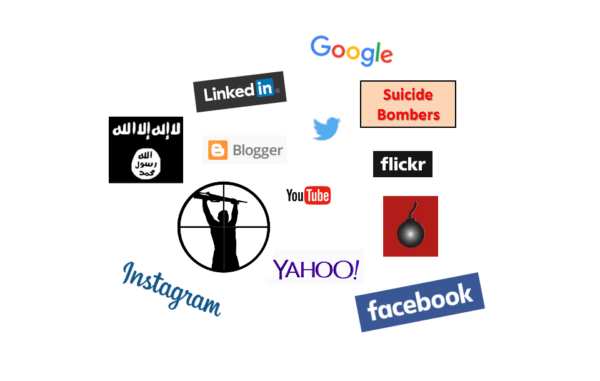
Social Media and Conflict – selected articles, papers, analysis, and commentary on the role of social media in conflict and war.
The Importance of Counter Influence Operations. History has shown that the United States is vulnerable to an extent by propaganda and covert influence operations. The British used it to lead us into World War I, the Soviet Union used it effectively against us during the “Cold War”, and the North Vietnamese were effective in its use to paint the Tet Offensive in 1968 as a U.S. military failure. Unfortunately the United States no longer has the U.S. Information Agency which could mount counter influence operations. One observer thinks that the U.S. Congress needs to ” . . . use 21st-century policy means to wage the 21st-century information war. America needs a Strategic Information Agency.” Read “Laying Bare the Enemy’s Aims: Defending Public Opinion in the 21st Century”, War on the Rocks, January 2, 2017.
Shaping Opinions. “War Goes Viral”, by Emerson T. Booking and P.W. Singer, The Atlantic, November 2016. A great and comprehensive article about how social media shapes opinion and is used by warring parties in conflict.
The Virtual Caliphate. The Islamic State of Iraq and al-Sham (ISIS) has an approach to information warfare that represents a key component of its overall strategy. Even though it is under pressure on the ground in the virtual world ISIS continues to make headway. While it may not establish a Caliphate that holds territory (it does now but may not in the long-term) it certainly can carve out a slice of the virtual world for its Caliphate. The United States and its allies need to continue to diminish the ISIS threat in the physical world but must meet the challenge ISIS poses in the virtual world as well. Read more in “The Virtual Caliphate: ISIS’s Information Warfare”, Institute for the Study of War, December 20, 2016.
Lone Wolfs and ISIS Virtual Planners. The Islamic State has its physical caliphate (Syria and Iraq) with provinces in places like eastern Afghanistan and the Lake Chad Basin. It also operates in the ‘virtual world’ as well. Learn more in “ISIL’s Virtual Planners: A Critical Terrorist Innovation”, War on the Rocks, January 4, 2017.
DARPA, Social Media, and the ID of Terrorists. The Defense Advanced Research Projects Agency is moving ahead with a project that looks to develop automated software designed to identify terrorist threats through social media. Executive Biz Blog, January 3, 2017.
Soft Power and the Weaponized Narrative. The new battlespace (in part) can be found on the Internet. Almost all parties to every current conflict in the world uses social media to shape the fight. Read more in “Weaponized Narrative is the New Battlespace”, Defense One, January 3, 2017.
ISIS and Social Media: A Fatal Attraction. Cellphones, computers, and social media are used by terrorists, insurgents, and political dissidents to spread their message and sway the conversation. But their use also pose danger. Read “Fatal Attraction: ISIS Just Can’t Resist Social Media”, The Daily Beast, January 3, 2017.